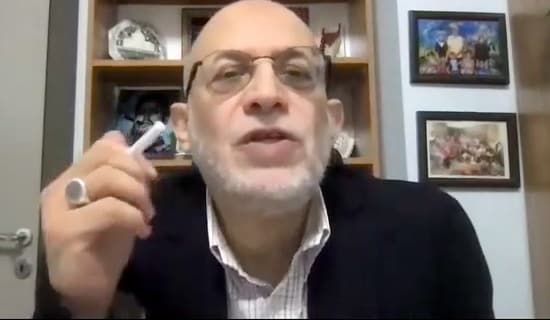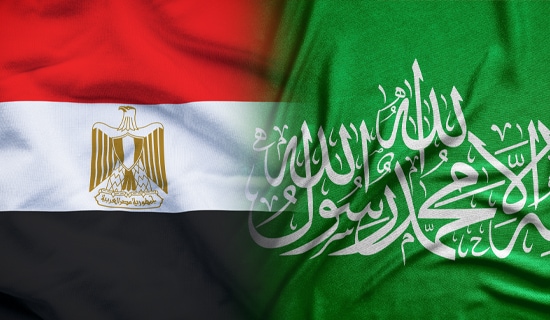The following report is a complimentary offering from the MEMRI Iran Threat Monitor Project (ITMP). For more information, write to memri@memri.org with "ITMP Subscription" in the subject line.
Gen. Amir-Ali Hajizadeh, the commander of Iran's Islamic Revolutionary Guards Corps (IRGC) Aerospace Force, said at the June 6, 2023 unveiling of Iran's new Fattah hypersonic missile that while currently the missile's range was 1,400 kilometers, in the future Iran would increase the range to 2,000 kilometers. Gen. Hajizadeh explained the missile's unique characteristics and stated that it could not be neutralized by any antimissile system.

The Fattah missile.
It should be noted that Russia has recently begun using its hypersonic Kh-47M2 Kinzhal missile in its war against Ukraine. Experts say that no current missile defense system can intercept it, since its maneuverability and speed make it impossible to track, and it can penetrate any such system.
The following are the main points of Gen. Hajizadeh's statements at the June 6 unveiling, and, following that, background on Iran's missiles from 2017:
Gen. Hajizadeh: "The Hypersonic Fattah Missile Is [Highly] Maneuverable... Iran Is The Fourth Country To Obtain This Technology"
"The Fattah missile is a hypersonic missile which can maneuvered, and this shows that Iran is the fourth country [in the world] to obtain this technology. No missile can hit it. This means that we can hit any target we want at a distance of 1,400 kilometers, and that no weapon can oppose this missile. This is due to the use of portable apertures and the maneuverability of its warhead.
SUPPORT OUR WORK

"The missile comprises two parts, the first of which is three meters and 60 centimeters long, and [is considered] a complete missile [in its own right.]. This means it has an engine, control, and a warhead. The second part of the missile has the capability to maneuver in the area threatened by the enemy, at a distance of several hundred kilometers from the target in different directions, altitudes, or combination of these, in which case the enemy cannot extrapolate its route, thanks to the use of control systems. On this basis, and due to its high speed and directional changes, if a missile is fired at it, this missile [Fattah] will easily pass it."
Hajizadeh added that the 1,400-km range was chosen for this missile because "all this is based on [selecting] the desirable targets. The fact that we build the Fattah missile for this range does not mean that in the future we won't have a missile with the same type of characteristics with a greater range, of 2,000 kilometers, but that the range [of this missile] is at this level for now, and that in the future we will expand its range."[1]

Hajizadeh at the Fattah unveiling (Source: Fars, June 6, 2023)
"We Can Accurately Hit, With The Help Of God, Any Target We Set Our Eyes On"
At the June 6 unveiling of the Fattah missile, Gen. Hajizadeh explained its unique characteristics. He said: "From a distance of 1,400 kilometers, we can accurately hit, with the help of God, any target we set our eyes on."
To view Gen. Hajizadeh's statements on MEMRI TV, click here or below:
The Issue Of Ballistic Missile Ranges – The 2,000-km Restriction
Contrary to statements by Iranian regime spokesmen who say that Iran's missile program is defensive, missiles with a 2,000-km range are strictly offensive and strategic. This is why Iran has faced constant demands to stop developing them.
It will be recalled that on December 10, 2013 immediately after the interim nuclear agreement with the U.S. was arrived at, and in reference to it, then-IRGC commander Mohammad Ali Jafari said that Iran is capable of producing missiles with a range of over 2,000 km but that Khamenei had restricted the IRGC to a 2,000-km range: "We want to increase the range of the IRGC's missiles, but despite this, the Leader [Khamenei] has restricted us to a range of 2,000 km. We have the capability to increase the range of our missiles, and our missiles should obviously reach Israel... The regime's red lines were not crossed during the nuclear talks with the P5+1 [Group] and in the Geneva Agreement."
The next day, on November 3, 2015, then-Iranian Army chief of staff Hassan Firouzabadi referred to Jafari's remarks, saying: "I confirm statements by the IRGC commander that Iran's missile activity is not restricted. We will follow two restrictions: The first is mentioned in the JCPOA, in the matter of no nuclear planning, and the second is the range of 2,000 km, which has already been noted previously by all elements in Iran."[2]
At an October 31, 2017 press conference at the World Without Terrorism convention in Iran, then-IRGC commander Jafari conveyed a message reassuring Europe in the matter of Iran's ballistic missiles. He announced: "The range of our missiles is limited to 2,000 km, in accordance with the policy set out by [Iranian Supreme] Leader Khamenei. Even though we have the capability to increase this range, in the meantime this range is enough for us, because the Americans are sufficiently situated within a 2,000-km radius around Iran. We will respond to them if they attack us."[3]
[1] Fars (Iran), June 6, 2023.
[2] MEMRI Inquiry & Analysis No. 1298, According To Iranian Officials, Obama Administration Gave Unwritten Consent In The Nuclear Talks And In The JCPOA Negotiations For Iran To Develop Ballistic Missiles With A Range Of Only 2,000 km – That Is, Capable Of Striking Israel But Not Europe, February 2, 20017.
[3] MEMRI Inquiry & Analysis No. 1357, IRGC Commander Jafari In Message Meant To Reassure Europe: Right Now, We Are Settling For Missiles With 2,000-Km Range – A Range That Covers U.S. Forces In The Region, November 3, 2017.




